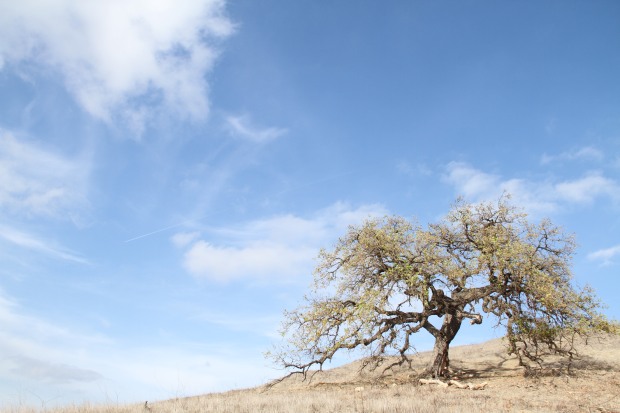There is a lot of talk and information going around these days about plants as medicine. Proponents of alternative healthcare discuss the many benefits of plants (and often exaggerate), but this conversation often takes place within the existing consumerist, self-concerned framework.
The plants are looked at as a resource to buy or harvest, as we harvest and over-harvest so many of Earth’s other resources. These discussions often place us outside of the circle of life, above it, with the rest of life below us as our servants and resources. But plants are not resources, they are life-forms. And we were not meant to be pure consumers, but rather partners in the ever-flowing exchange of energies that makes up the Earth’s biome.
This point is especially critical here in Southern California where the plant medicines are not often exceedingly abundant. In dry years some of our beloved plants are barely hanging on. That is why it upsets me deeply to see White Sage (Salvia apiana) plants with the whole tops of their branches cut off to make the Sage bundles that people like so much. Some plants are abundant and hearty and can take more extensive harvesting, but others cannot.
It is our duty as part of the global organism to observe our plant partners and consider their needs as well as ours. There is no need for our relationship to be one of pure consumption and destruction. Many plants can actually flourish and benefit from appropriate human grazing. Stinging Nettle is one example which comes to mind. When harvested properly, taking small amounts of new growth from the tops, the plants will produce much more foliage and extend their growth period to become perennials.
The way I look at it is that we should try to operate as much as possible as cells in the greater organism. Yes we must provide for ourselves, but we must also consider the health of the other cells, for without the health of the greater organism, the cells (ourselves included) have no chance of survival. It reminds me of a concept I have heard H.H. The Dalai Lama discuss called intelligent selfishness. In his discussion he points out how being compassionate and helpful to other beings actually is the best way to create one’s own happiness and so it is not selflessness but rather intelligent selfishness. It is the same with harvesting plant medicines. It is in our interest to have beautiful flourishing ecosystems and to have plant medicines available for years to come, so we must interact with the plants accordingly.
If I see a white sage plant that is really struggling this time of the year, I don’t harvest even a single leaf. Sometimes I take a moment to sit down with the plant and really observe and see whether it can stand harvesting, and if so to what extent. If there is a plant in your area that is scarce, but that you or your loved ones would get great benefit from, try growing it in your garden. You can look for a local native plant nursery or you can pick a dry seed head from the trails and propagate it at home. When I go hiking and harvesting I bring extra water so that I can give a little to any plants I harvest from. I don’t know if it’s enough to actually help, or if it’s more ceremonial, but either way it keeps me aware of the mutual exchange that should be happening in the relationship.
I don’t mean to turn people away from plant medicines with this post. I hope everyone empowers themselves to use nature’s gifts as medicine. Many of my future posts will help to teach how we can use these wonderful plants. I only wish that all who learn to use these medicines also learn to respect them and care for them. Thank you.
P.S. Much of this was inspired by Cecelia Garcia and James D. Adams Jr.. I cannot recommend their book “Healing with Medicinal Plants of the West” highly enough. Also if you have an opportunity to go on an educational hike with professor Adams take it. He has a wealth of knowledge and wisdom regarding our native Southern California plants.
P.P.S.: I just exchanged e-mails with Professor Adams and he asked me to emphasize the importance of growing our own White Sage in particular, as it is over-harvested in many areas.

